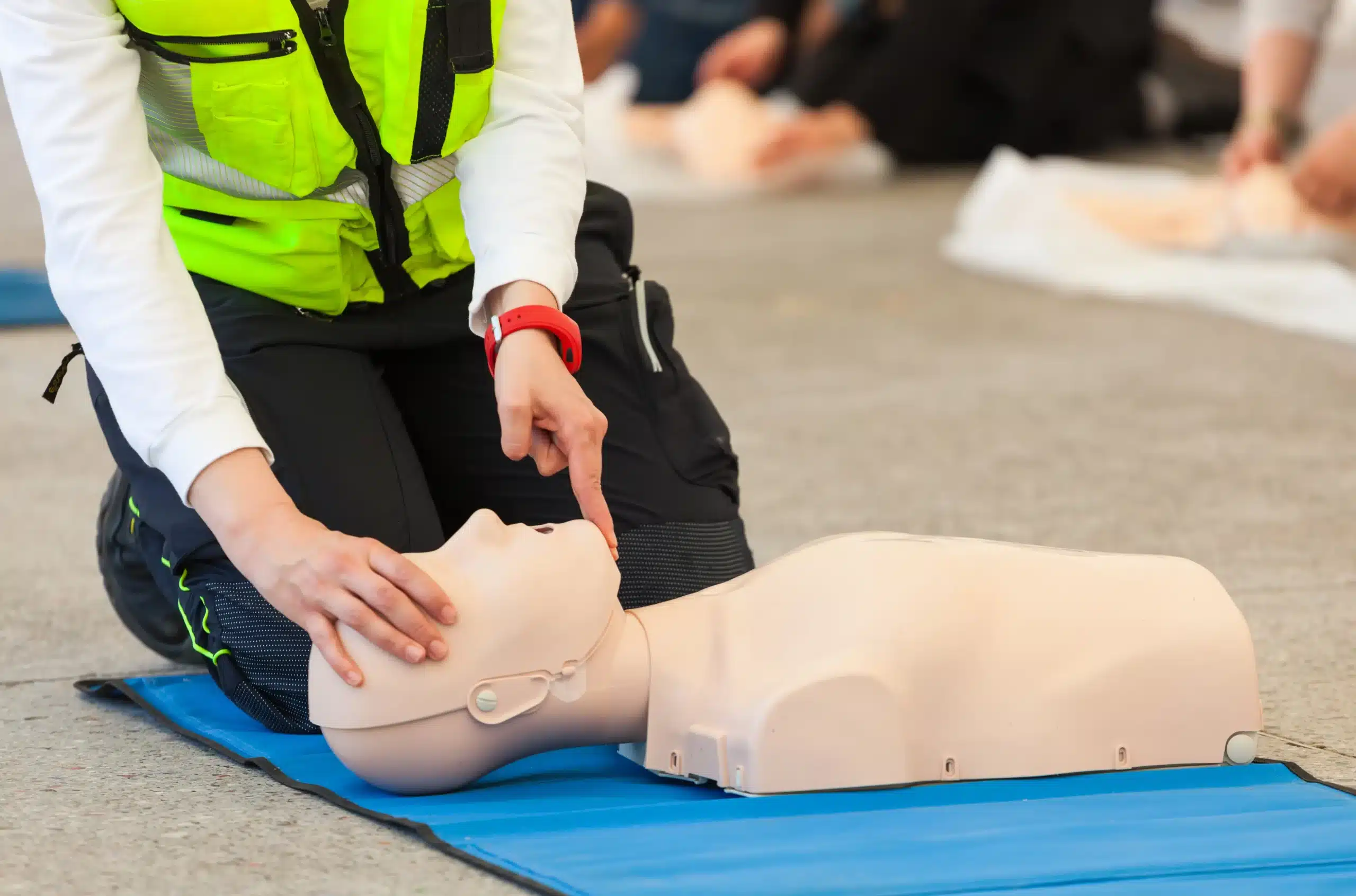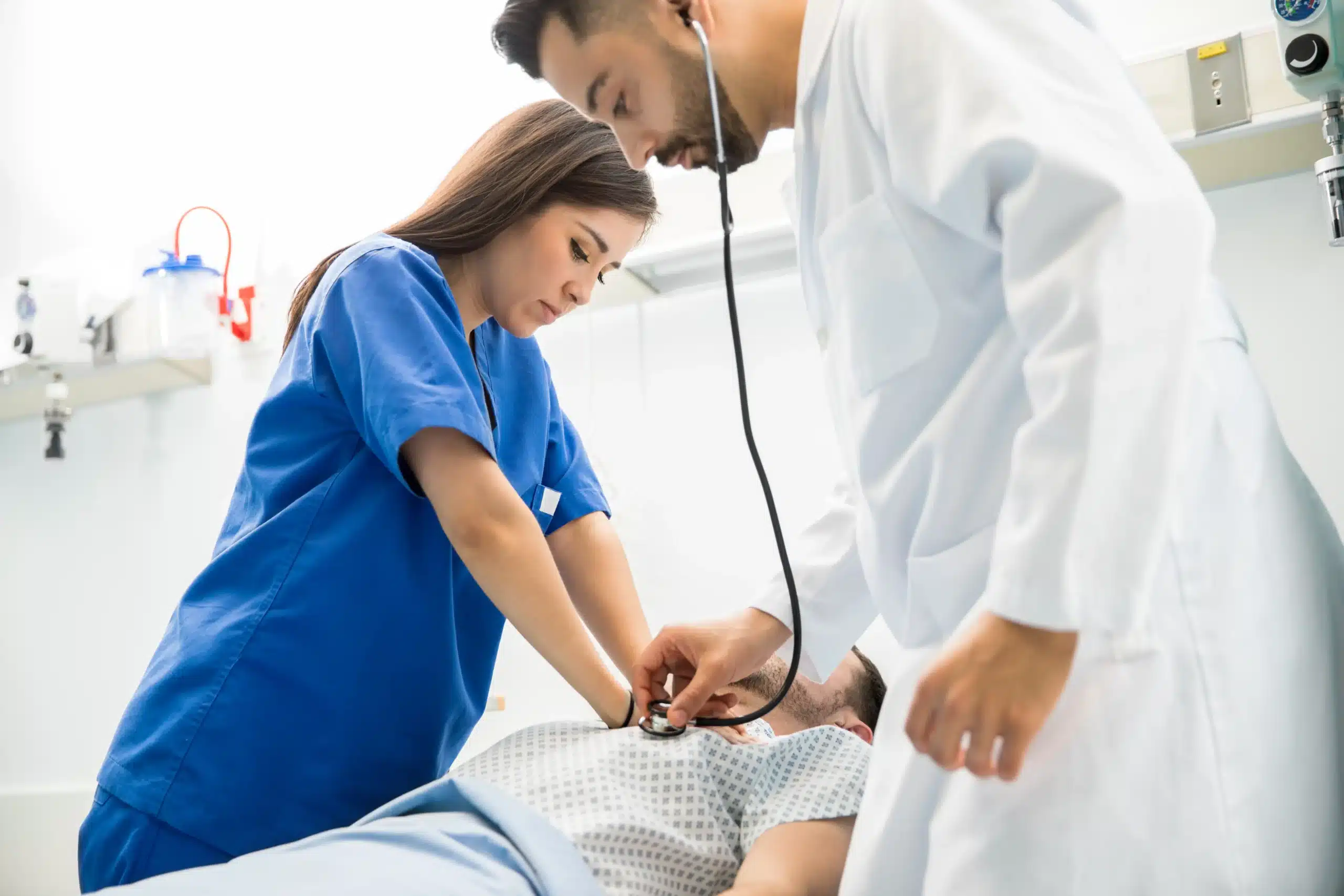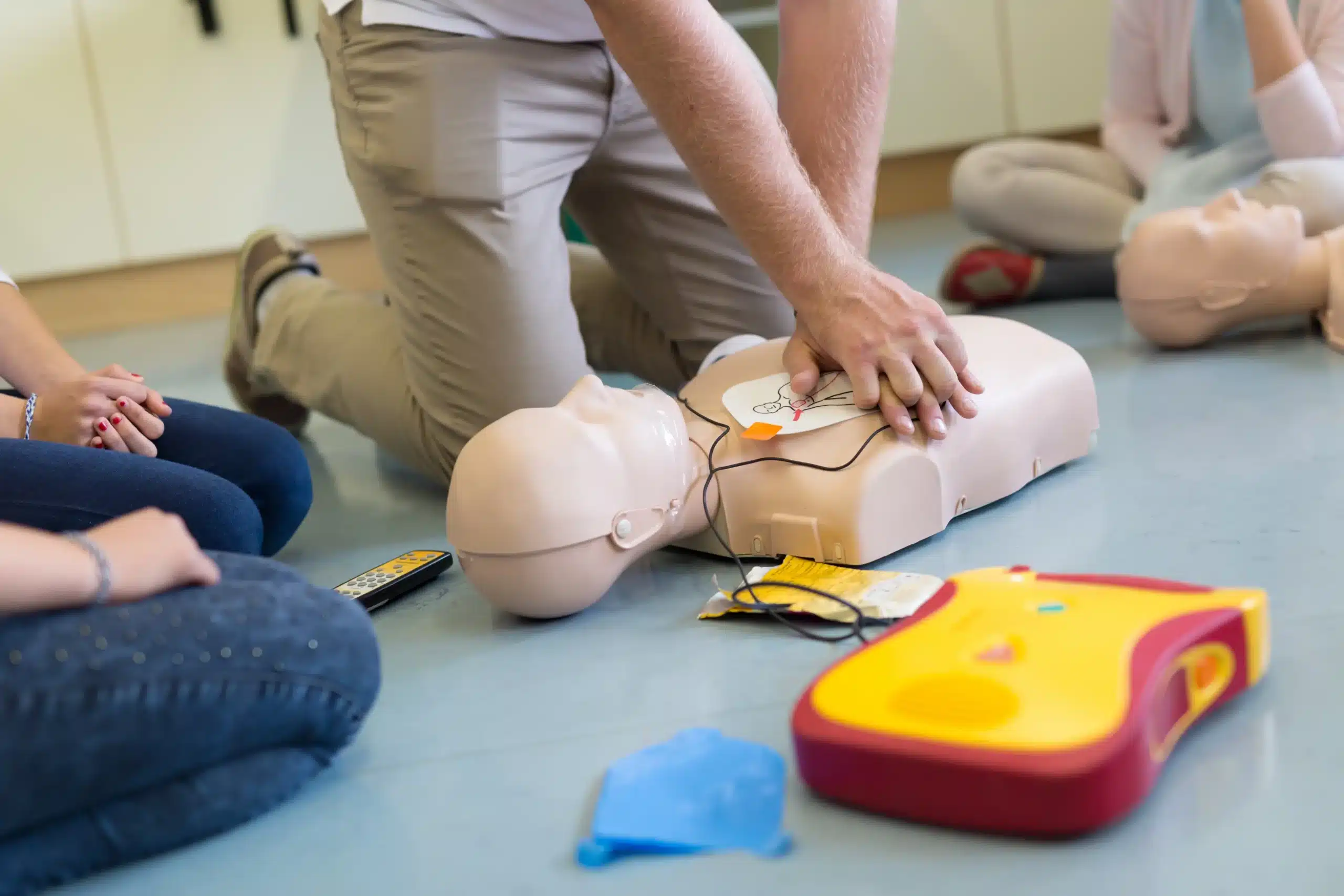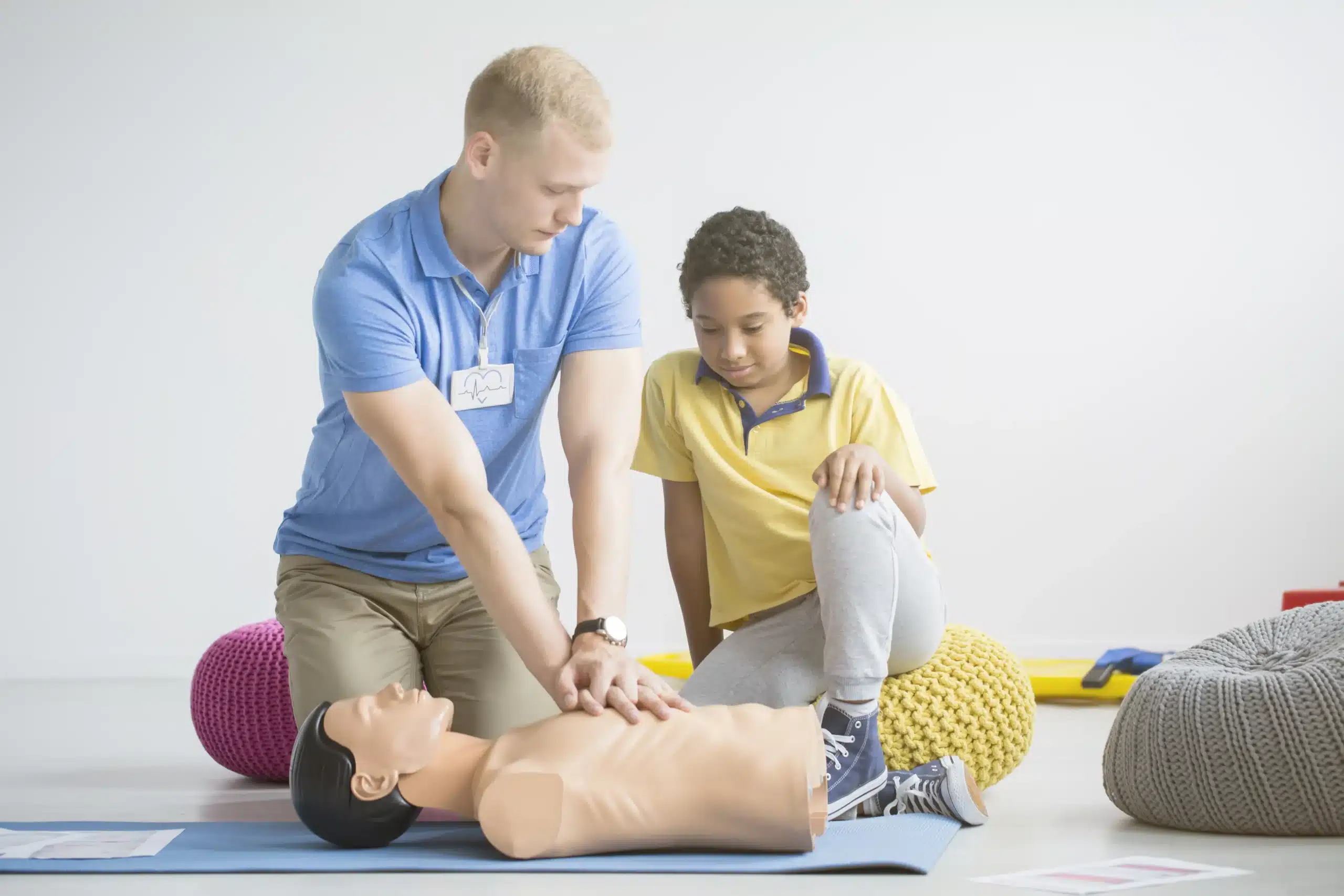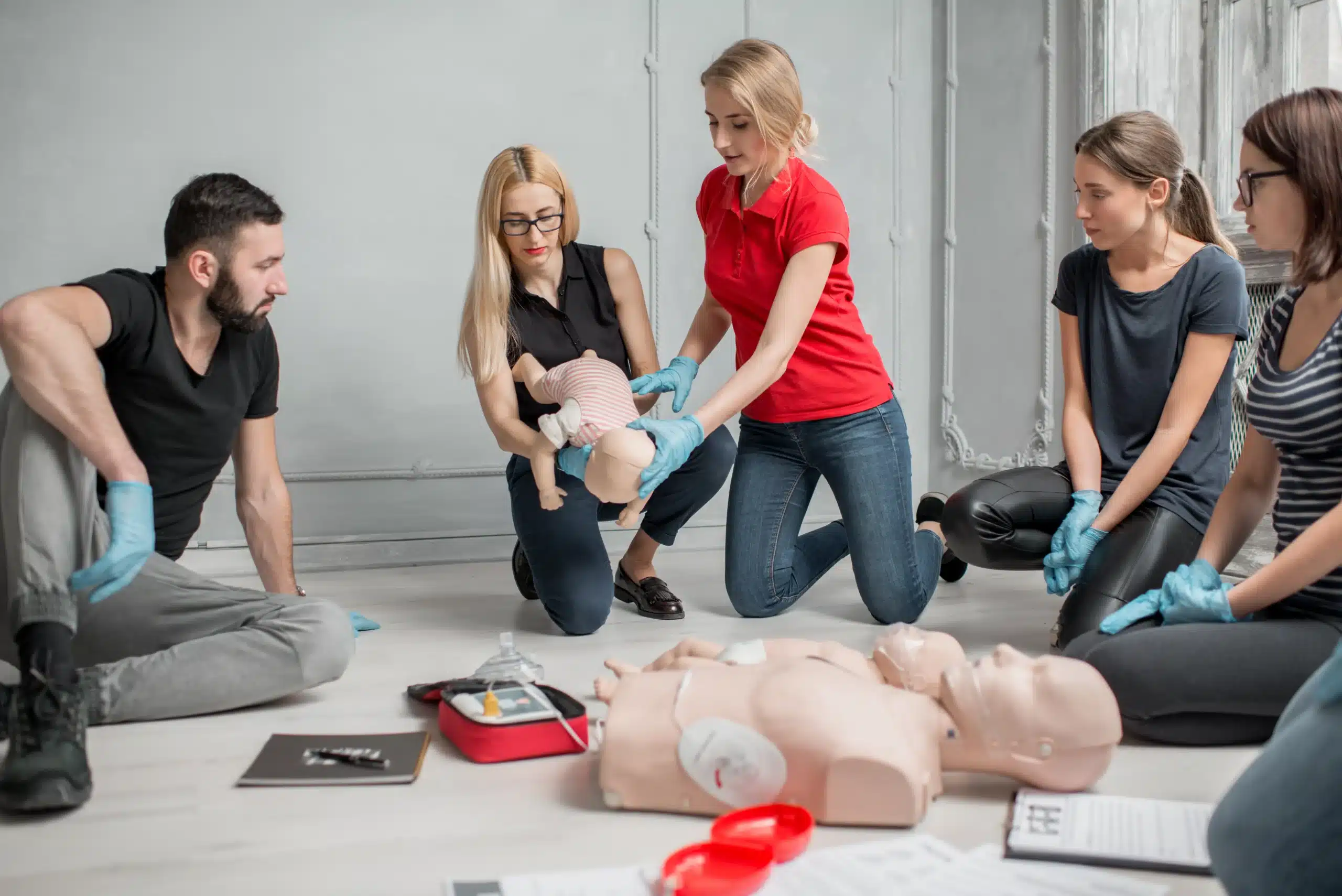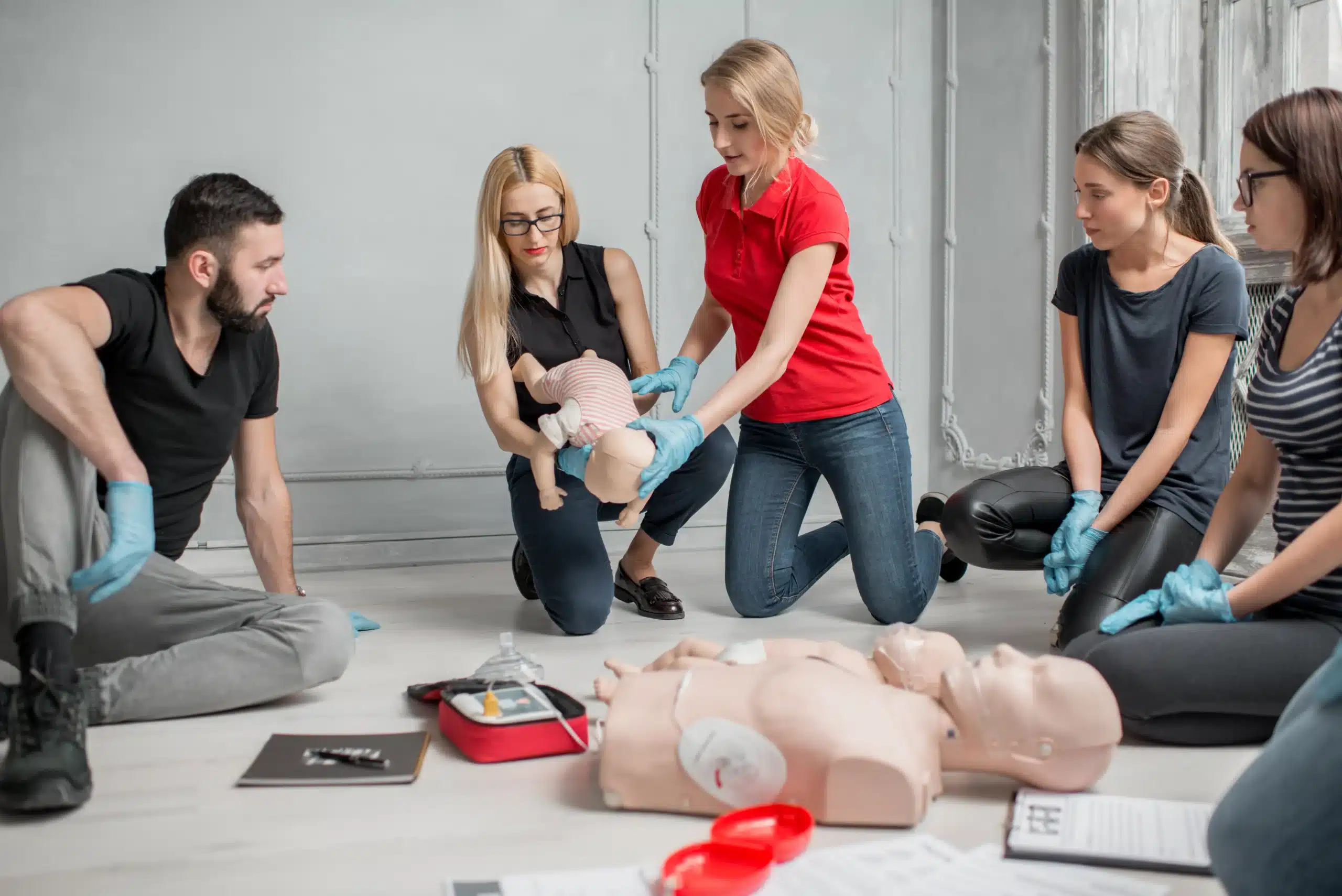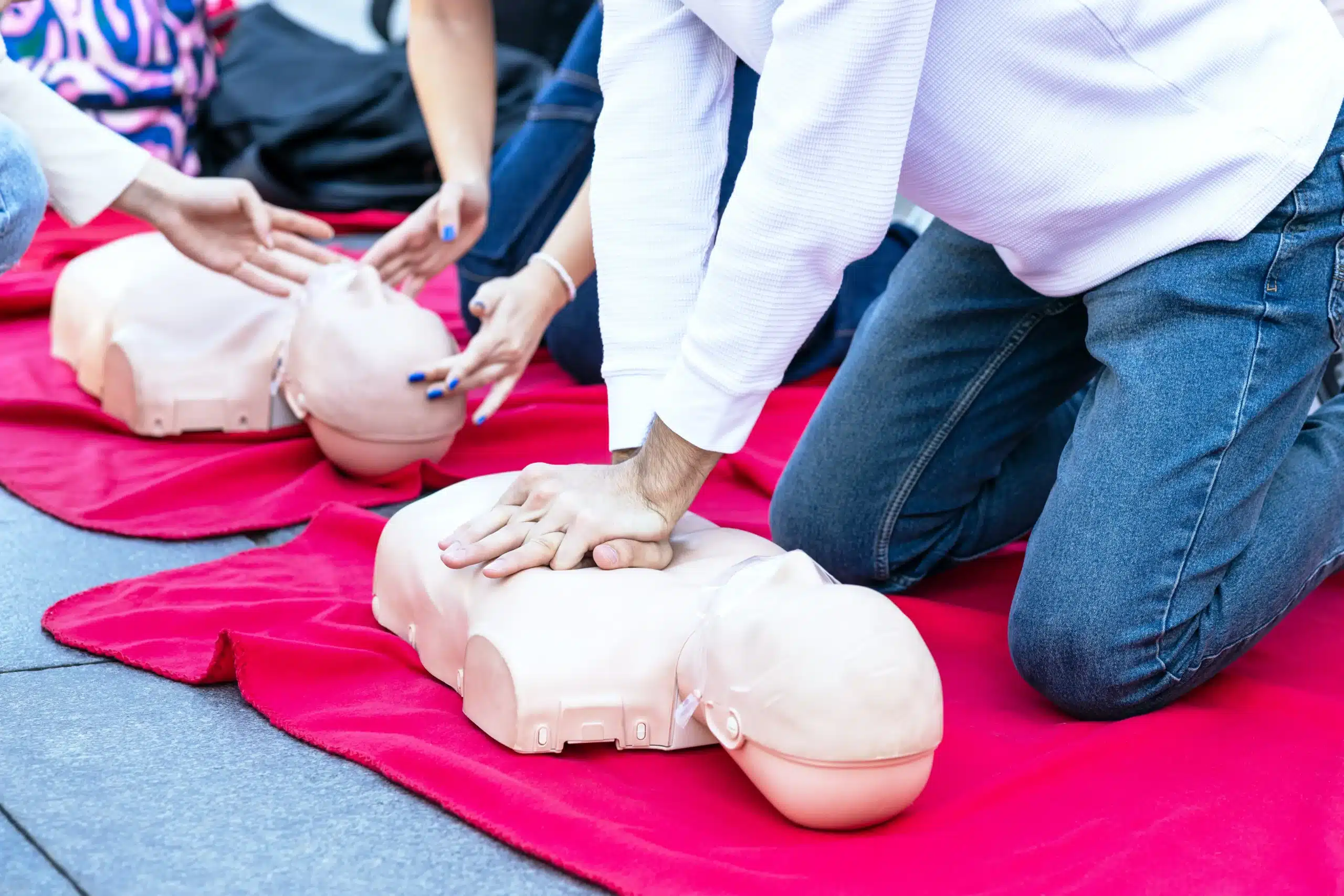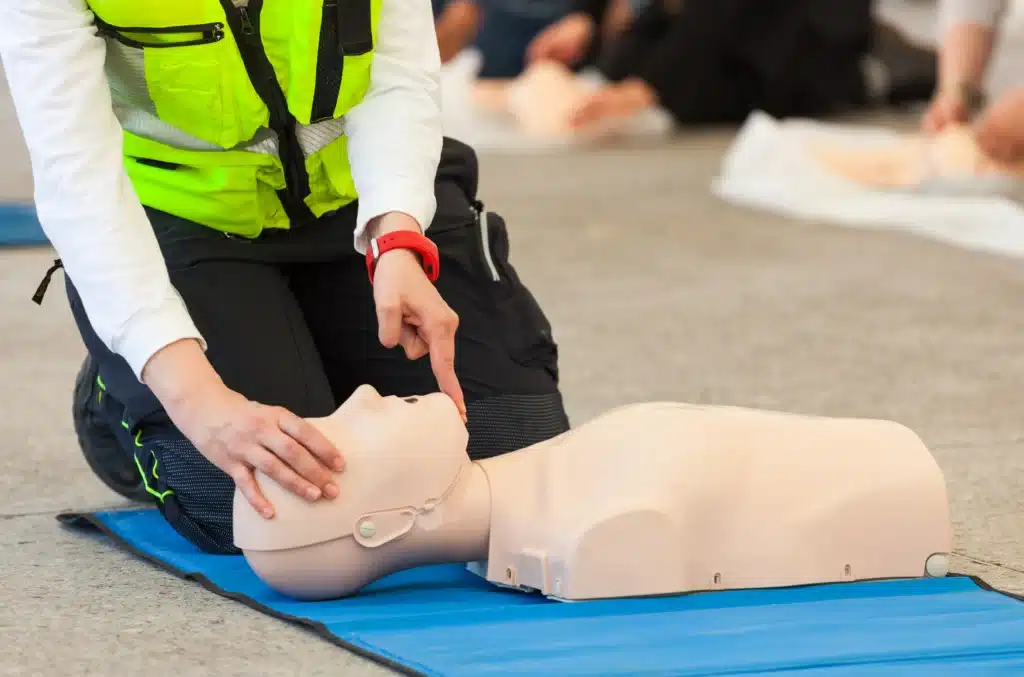Emergencies can happen anytime, anywhere. Being equipped with Basic Life Support (BLS) skills can empower you to act quickly and potentially save a life. This guide provides a comprehensive overview of BLS, from understanding its core principles to finding the right BLS classes in Oakland. We’ll discuss the essential skills covered in BLS training, the different types of courses available, and the importance of staying up-to-date with the latest guidelines. Whether you’re a healthcare professional, a concerned parent, or simply someone who wants to make a difference, this guide will help you understand the value of BLS and how to get certified.
Key Takeaways
- BLS training empowers you to act in emergencies: Learning essential life-saving techniques like CPR and using an AED can make a real difference before professional help arrives.
- Choose the right BLS course for your needs: Consider in-person, online, or blended learning options based on your schedule and learning preferences. Look for an accredited provider offering AHA-certified courses.
- Stay current to maximize your BLS certification: Regularly renewing your certification ensures your skills are up-to-date and reflects your commitment to providing high-quality care.
What is BLS & Why is it Important?
Knowing Basic Life Support (BLS) can make all the difference in a crisis. It’s about having the skills to respond effectively in those critical moments before professional help arrives. This section breaks down what BLS is, the core skills it teaches, and why it’s so important for both healthcare professionals and the wider community.
What is BLS and Who Needs It?
BLS certification equips you with the fundamental skills to respond to life-threatening emergencies. It’s often a job requirement for healthcare providers, like doctors and nurses, as well as first responders. But BLS isn’t just for medical professionals. Anyone can benefit from this training—teachers, childcare providers, parents, or anyone who wants to be prepared. BLS certification provides a foundation for quality patient care and empowers individuals to act confidently in emergencies. Think of it as a vital skill set that can help you protect your loved ones and make a real difference in your community. Our San Pablo CPR classes offer comprehensive BLS training. We also offer an EMSA Child Care Health and Safety course.
Key BLS Skills and Techniques
BLS training covers essential life-saving techniques. You’ll learn how to perform high-quality CPR for adults, children, and infants, including how to use an Automated External Defibrillator (AED). The curriculum also teaches you how to recognize the signs of cardiac arrest and relieve airway obstructions. These skills are crucial for providing immediate care in those first few minutes of an emergency, which can significantly impact a person’s chances of survival. For those needing recertification, our convenient RQI program ensures your skills stay sharp.
BLS Impact on Healthcare and Community Safety
Having a current BLS certification demonstrates a commitment to patient safety and preparedness for emergencies. For healthcare professionals, maintaining your BLS certification is often a requirement for employment and shows a dedication to providing excellent care. But the impact of BLS goes beyond the hospital. When more people in a community are trained in BLS, it creates a network of potential lifesavers. This can significantly improve outcomes and contribute to a safer environment for everyone. Our classes are available in over 60 cities in Northern California and our low price guarantee makes training accessible to all. Contact us to learn more.
Top Oakland BLS Class Providers
Finding the right BLS class is crucial for both your confidence and career. Here’s a rundown of some providers in Oakland:
Safety Training Seminars
Safety Training Seminars offers the American Heart Association’s HeartCode BLS program, a blended learning course that combines online learning with in-person skills practice. This format offers flexibility for busy professionals. You can complete the online portion at your own pace, then schedule a hands-on session to demonstrate your skills and receive your BLS certification. They also offer other courses like EMSA Child Care Health & Safety. Safety Training Seminars has a low price guarantee and serves the surrounding areas, including Richmond, Berkeley, and Oakland from their convenient San Pablo location. For questions, contact them.
American Red Cross
The American Red Cross is a well-known provider of BLS training in Oakland. Their BLS certification courses focus on real-world scenarios, giving you practical experience with essential life-saving techniques. Check their website for course schedules.
CPR Certification Oakland
CPR Certification Oakland offers AHA-certified BLS classes designed to meet diverse learning needs. They focus on providing high-quality instruction and aim to equip participants with the skills and confidence to respond effectively in emergencies.
Oakland Fire Department
The Oakland Fire Department may offer BLS training; contacting them directly or checking their website is recommended for current information on available courses.
Alameda County EMS Agency
The Alameda County EMS Agency is another potential resource for BLS training. Reach out to them or visit their website for details on any BLS courses they might provide.
What Happens in a BLS Class?
If you’re considering BLS certification, you’re probably curious about what the course entails. Here’s a preview of what you can expect, from the classroom setup to the skills you’ll practice:
Course Structure and Duration
BLS classes typically run about 4.5 hours, though times may vary slightly depending on the provider and if it’s for a standard or customized group. Our BLS certification courses in San Pablo offer various dates and times to accommodate busy schedules. For larger groups, we can often tailor sessions to fit your specific scheduling needs.
Essential Topics Covered
A BLS course covers a range of life-saving techniques. You’ll learn adult, child, and infant CPR, proper AED (automated external defibrillator) use, and how to relieve airway obstructions. The curriculum also emphasizes critical thinking, teamwork, and post-incident debriefing to prepare you for real-world emergencies. We cover these essential skills in our American Heart Association BLS courses.
Hands-On Practice and Simulations
BLS classes aren’t just lectures. You’ll participate in hands-on practice with realistic simulations, including CPR practice on mannequins, using barrier devices, and working through scenarios that simulate real emergencies. This practical experience builds confidence and muscle memory, preparing you to act quickly and effectively when needed. Check out our upcoming CPR and First-aid courses in San Pablo for this hands-on training.
Certification Process and Validity
After successfully completing the course and skills testing, you’ll receive an American Heart Association BLS CPR card, valid for two years. This nationally recognized certification demonstrates your competence in basic life support. You’ll also receive a pocket mask, a valuable tool for emergencies. Our courses adhere to the American Heart Association standards for BLS certification, ensuring high-quality training and a credible certification.
Find the Right BLS Class
Finding the right BLS class depends on a few key factors. Think about your learning style, schedule, and budget to determine the best fit. Here’s a breakdown to help you choose:
Choosing a Provider
When selecting a BLS certification provider, look for proper accreditation and a strong reputation. A good first step is checking if they offer American Heart Association-certified courses. In Oakland, BLS renewal courses through the AHA typically cost around $64.95, a common price point among respected training centers. Research and compare different providers before committing to a class. Our low price guarantee helps ensure you receive excellent value.
In-Person vs. Online
BLS courses come in several formats. In-person classes offer hands-on training and direct interaction with instructors. Online courses provide flexibility and convenience, allowing you to learn at your own pace. Blended learning programs, like the RQI program, combine online learning with in-person skills sessions. Consider which learning environment best suits your needs. Our course calendar lists in-person options in San Pablo, conveniently located for those in Richmond, Berkeley, and Oakland.
Class Schedules and Flexibility
Many training centers offer various class schedules to accommodate busy schedules. Look for a provider offering weekend, evening, or accelerated courses. This flexibility is especially helpful for those balancing work, family, and other commitments. We understand busy schedules and strive to offer convenient options. Explore our upcoming CPR and First Aid courses in San Pablo to find a time that works for you.
Costs, Discounts, and Group Training
BLS certification costs vary depending on the provider and course format. Many providers offer discounts for group training, a cost-effective option for workplaces or groups. Ask about potential discounts or group rates when comparing providers. BLS certification is an investment, so finding an affordable option is key. Our low price guarantee ensures quality training at a competitive price. Whether you’re a healthcare provider, childcare professional, or want to be prepared for emergencies, BLS certification is valuable. Our EMSA Child Care Health & Safety course is a great resource for childcare providers. Contact us with any questions or for help finding the right BLS class.
Get the Most Out of Your BLS Certification
Getting your BLS certification is a significant step, but it doesn’t end there. Here’s how to truly maximize its value:
Using BLS Skills in Healthcare
BLS certification is often a prerequisite for more advanced certifications like ACLS and PALS. It’s foundational for healthcare providers, equipping you with the skills to respond to cardiac arrest, respiratory distress, and other emergencies. Even if you aren’t directly involved in patient care, having these skills makes you a valuable asset in any healthcare setting. You’ll be prepared to assist in emergencies and contribute to a safer environment for everyone. Check out our BLS certification course to get started.
Staying Current: Updates and Renewal
Staying up-to-date with the latest BLS guidelines is crucial. Renewal ensures your skills are sharp and reflect current best practices from organizations like the American Heart Association. These guidelines are regularly updated based on the latest research and advancements in resuscitation science. Regular BLS renewal demonstrates your commitment to providing high-quality care. Our convenient RQI program makes staying current straightforward.
Improve Patient Care and Professional Growth
Maintaining a current BLS certification isn’t just about checking a box; it demonstrates a commitment to providing excellent patient care. It shows you take your role seriously and are dedicated to continuous improvement. A current certification can also enhance your professional development, making you a stronger candidate for new opportunities. It can open doors to new specializations within your field. Contact us to learn more about our CPR and First-Aid courses in San Pablo. We also offer a low price guarantee.
Related Articles
- Basic Life Support in Richmond: A Practical Guide – San Pablo CPR Classes
- BLS for Healthcare Providers in Berkeley: A Complete Guide – San Pablo CPR Classes
- BLS Certification in Richmond: Your Complete Guide – San Pablo CPR Classes
- Online BLS Classes in Oakland: Your Complete Guide – San Pablo CPR Classes
- BLS Renewal in Richmond: Your Complete Guide – San Pablo CPR Classes
Frequently Asked Questions
Is BLS certification right for me, even if I’m not a healthcare professional? Absolutely! While often required for healthcare providers, BLS training benefits anyone who wants to be prepared for emergencies. Knowing how to respond effectively can make a real difference in critical situations, whether at home, work, or out in the community. It empowers you to assist family, friends, coworkers, or even strangers.
What’s the difference between BLS and CPR? CPR (Cardiopulmonary Resuscitation) is a core component of BLS (Basic Life Support). BLS encompasses a broader range of skills, including CPR, using an AED, relieving choking, and recognizing the signs of various medical emergencies. Think of CPR as one vital tool within the larger BLS toolkit.
How often do I need to renew my BLS certification? BLS certification is typically valid for two years. Renewing on time ensures your skills and knowledge align with the latest American Heart Association guidelines, which are regularly updated to reflect advancements in resuscitation science.
What if I have a busy schedule? How can I fit BLS training in? Many providers offer flexible scheduling options, including weekend, evening, and accelerated courses, to accommodate busy lifestyles. Some also offer blended learning formats, combining online coursework with shorter in-person skills sessions. This allows you to learn the material at your own pace and then demonstrate your skills in a hands-on setting.
How can I find a reputable BLS training provider in my area? Look for providers offering American Heart Association-certified courses. This ensures the training meets established standards. You can also check online reviews and compare pricing to find a provider that fits your needs and budget. Often, local fire departments or community colleges also offer BLS courses.
